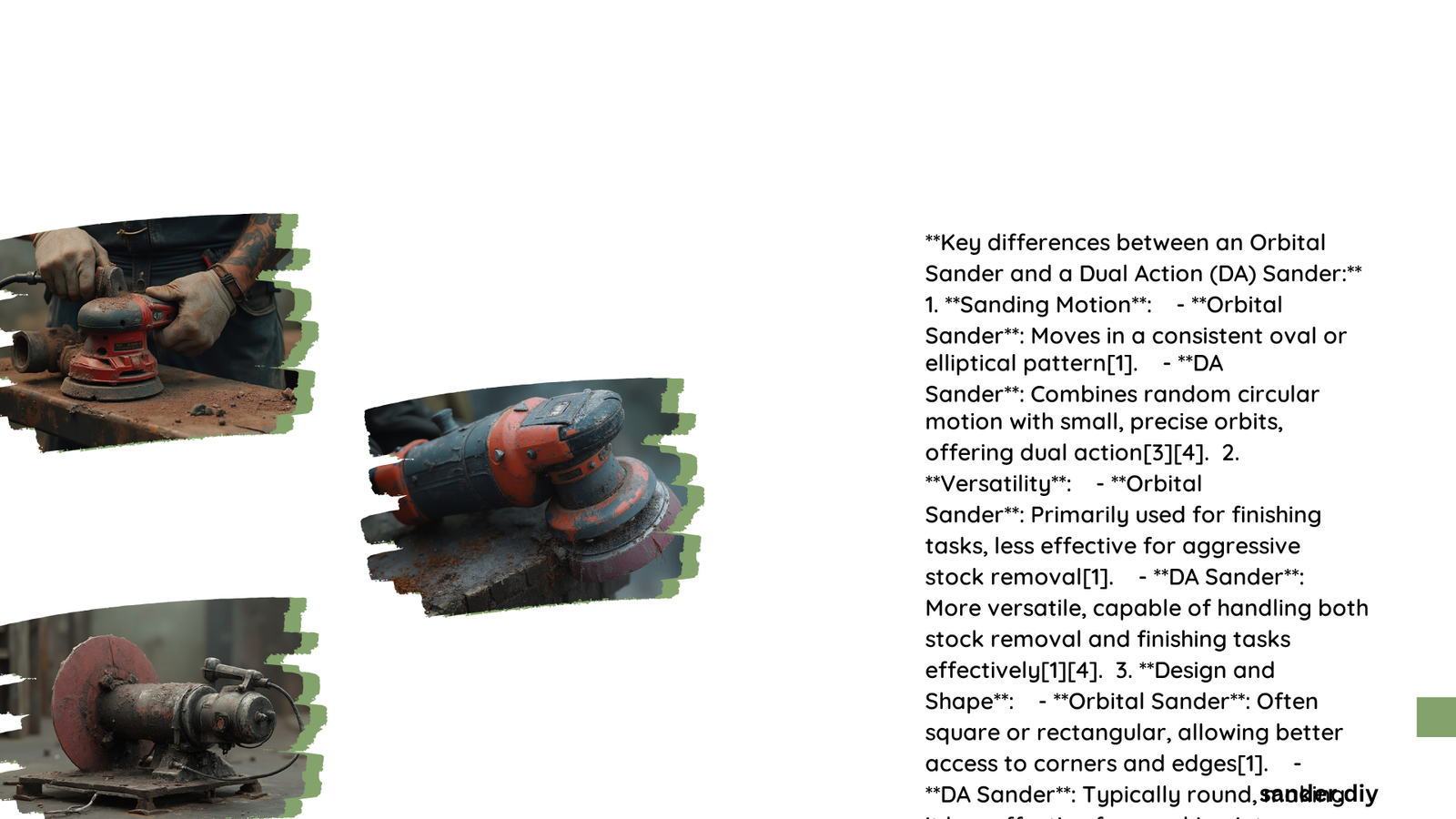Orbital and DA sanders represent two distinct power tool technologies with unique sanding characteristics. While orbital sanders provide smooth, consistent oval motions ideal for fine finishing, DA (Dual Action) sanders combine rotary and orbital movements for more aggressive material removal and versatility across different surfaces. Understanding their fundamental differences helps professionals and DIY enthusiasts select the most appropriate tool for specific project requirements.
What Makes Orbital and DA Sanders Different?
How Do Sanding Motions Vary?
Orbital sanders move in consistent, controlled oval patterns, creating smooth finishes with minimal surface disruption. In contrast, DA sanders utilize a dual-action mechanism that simultaneously rotates and orbits, enabling more aggressive material removal and adaptability.
| Feature | Orbital Sander | DA Sander |
|---|---|---|
| Motion Type | Consistent oval/elliptical | Rotary + orbital |
| Material Removal | Gentle | Aggressive |
| Finish Quality | Extremely smooth | Smooth with faster processing |
What Are the Structural Design Differences?
Pad Configurations
- Orbital Sanders:
- Square or rectangular pads
- Better corner accessibility
-
Precise edge work
-
DA Sanders:
- Predominantly round pads
- More versatile surface coverage
- Enhanced contour adaptation
Where Are These Sanders Most Effective?
Orbital Sander Applications
- Fine furniture refinishing
- Delicate wood surface preparation
- Final polishing tasks
- Minimal material removal scenarios
DA Sander Applications
- Automotive bodywork
- Aggressive surface leveling
- Primer and filler preparation
- Versatile material processing
How Do Performance Characteristics Differ?
Orbital sanders excel in precision and controlled finishing, making them ideal for woodworking projects requiring meticulous surface treatment. DA sanders offer greater flexibility, combining powerful material removal with adaptable motion, particularly beneficial in automotive and industrial applications.
What Technical Specifications Set Them Apart?
Key Performance Metrics
- Orbital Sanders:
- Typical orbital movement: 1/8 to 1/4 inch
- Speed range: 10,000-12,000 RPM
-
Dust collection: Integrated systems
-
DA Sanders:
- Orbital movement: Variable (manufacturer-dependent)
- Speed range: 8,000-15,000 RPM
- Dual-mode functionality (orbital/straight)
Which Factors Influence Tool Selection?
Choosing between orbital and DA sanders depends on:
– Project complexity
– Surface material
– Desired finish quality
– Material removal requirements
– Budget constraints
What Maintenance Considerations Exist?
Orbital Sander Care
- Regular pad replacement
- Consistent dust collection
- Careful speed management
DA Sander Maintenance
- Air pressure regulation
- Lubrication of moving parts
- Comprehensive seal inspection
Conclusion

Understanding the nuanced differences between orbital and DA sanders empowers users to make informed tool selection decisions. Each sander offers unique advantages, and matching the tool to specific project requirements ensures optimal performance and superior results.
